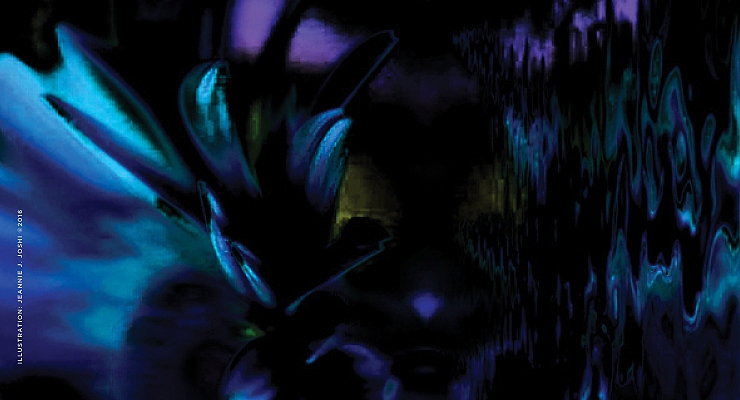
2016-08-25 09:20:05
Setting Forth New Aesthetics: Highly Poetic Beauty Packaging Solutions
2016-08-25 09:20:05
 Functional Appeal. (See the Online Exclusive, Highlights from HBA Global Expo 2016.)
Functional Appeal. (See the Online Exclusive, Highlights from HBA Global Expo 2016.)
Here, Joshi describes four design scenarios that are happening now - and suggests beauty packaging executives take notice, since they are likely to continue in 2017-18.
See the slideshow above - and design scenarios described below.
Photo Credits: 1. © Jeannie J. Joshi 2016; 2. © Jeannie J. Joshi 2016; 3. Designer/Architect Ross Lovegrove; 4. Designer/Architect Ross Lovegrove; 5. collage, various sources; 6. Wikicells; 7. Wikicells; 8. Miya Ando; 9. Harmless Packaging, Natura Sou; 10. Prismologie Body Care
Scenario #1: Strategic Color. The Silent Sales Tool.
Color is being used in fresh ways to create a story for new collections. BioLuminescent Colors and Materials are part of a broader foresight story that builds on an eco-focused aesthetic.
Colors in this trend include Seaspray Blues, and Mineral/Iron Greens. Materials will be decorated with colors and finishes inspired by the shimmering reflections of a seashell evoking the shapes and textures of ocean inhabitants.
Texture also becomes a core component for strategic package design. Be inspired by the skin of mysterious creatures, the iridescent surfaces of shells and the play between light and water. Take inspiration from oceanic depths and outer space.
Coral, bright yellow, muted gold and ombre blues also fit this trend. Think about the high-shine look of whitened copper and brass — with resin, wood or glass. A simple metallic stopper or a sculptural glass container might inspire an elegant gift bottle set, make-up sets and perfume concepts.
Strategic color reflects the product’s scent, ingredient and purpose. The body-care brand Prismologie captures the effects of color to uplift, enhance and inspire moods of the day.
Teresa van Dongen, biologist and designer, created Ambio, lamp lights that contain extracts from bioluminescent micro-organisms. The lamp glows when in detects an potential alternative energy source in nature.
Scenario #2: Skin Nutritionists
Consumers are more empowered than ever, and have a say in creating the products they want - in the packaging they want.
French skin care brand Codage is one example. The company launched a new online tool that enables customers to design their own bespoke skin care serum by completing a short online questionnaire, called myCODAGE. The tool allows shoppers to customize packaging with the recipient's initials and formula as well as a personal message.
Beauty is power and beauty consumers are now being given the option to purchase products that contain exactly the right mix of ingredients for specific skin concerns. Many of these ingredients are food-derived.
The Beauty Chef founder Carla Oates launched Body Inner Beauty Powder, a 'superfood' wellness supplement formulated with plant proteins, fruits and vegetables to 'nourish and balance the body and skin from the inside out’.
Charcoal and clay seem to be the new the buzzwords in beauty. Mainly for their detoxifying benefits, these two key ingredients are now being put into skincare and healthy juices.
Scenario #3: The New Face of Beauty Is…
More personalized packaging is now and next, as well as “Polycultural Packaging.” The polycultural movement is about local aesthetics without cliches and stereotypes.
One example is Yves Saint Laurent. The brand spent nine years researching 7,000 global skin tones before creating its new 22 foundation shades. (Source: Stylesight). Take a look at The 'Humanae' Pantone Skin Color Project, a hypothetical conceptual/artistic project thatshowcases the full spectrum of humanity referencing the PANTONE® color scheme.
Scenario #4: Transformative Packaging
This is about sustainability, but I call it “Transformative Packaging.” It is about eco-friendly designs that will help reduce the amount of packaging that ends up in landfills. The brands that are helping to conserve our ecosystem will be more popular in the coming years. Sustainable solutions should become priority for eco-conscious brands and environmentally friendly packaging solutions.
Many designers and brands are pioneering the use of new types of eco-friendly packaging. Options now include edible, dissolvable and preservative wrappings - innovations of both edible and non-edible forms. Wikipearl is a natural, biodegradable, edible food wrap made from a protective electrostatic gel.
Harvard biomedical engineer, Professor David A. Edwards recently introduced WikiCells, in conjunction with designer, François Azambourg, as a new edible packaging technology that allows for the transport of food without the use of plastic. This concept eliminates the need for excess waste and energy depleting processing.
Apple initiated the transformative ‘up cycling’ momentum, back in 2012. Its patented iPhone packaging enables it to double as a charging dock, encouraging consumers to extend the package’s shelf life, giving them a new life and secondary use…up cycling. It is an effective way for a brand or retailer to reduce their waste quota. It also effectively extends the line of communication and encourages more positive interaction between a brand and its consumers.
ABOUT THE AUTHOR
Jeannie Joshi of Joshi Design (NY, NY) is a leading leading independent designer and creative strategist who works with premier brands and agencies.
Joshi guides a diverse portfolio of best-in-class visual design across print and digital for beauty, luxury and corporate verticals. She has always viewed design as a calling as a means of communicating across personal and cultural lines more profoundly than mere words. She believes both beauty and anthropological awareness should inform design in the digital age.Contact Joshi by email here.
Looking for compact container?
please visit www.topbeautysh.com for more cosmetic packaging information.
LinkedIn




